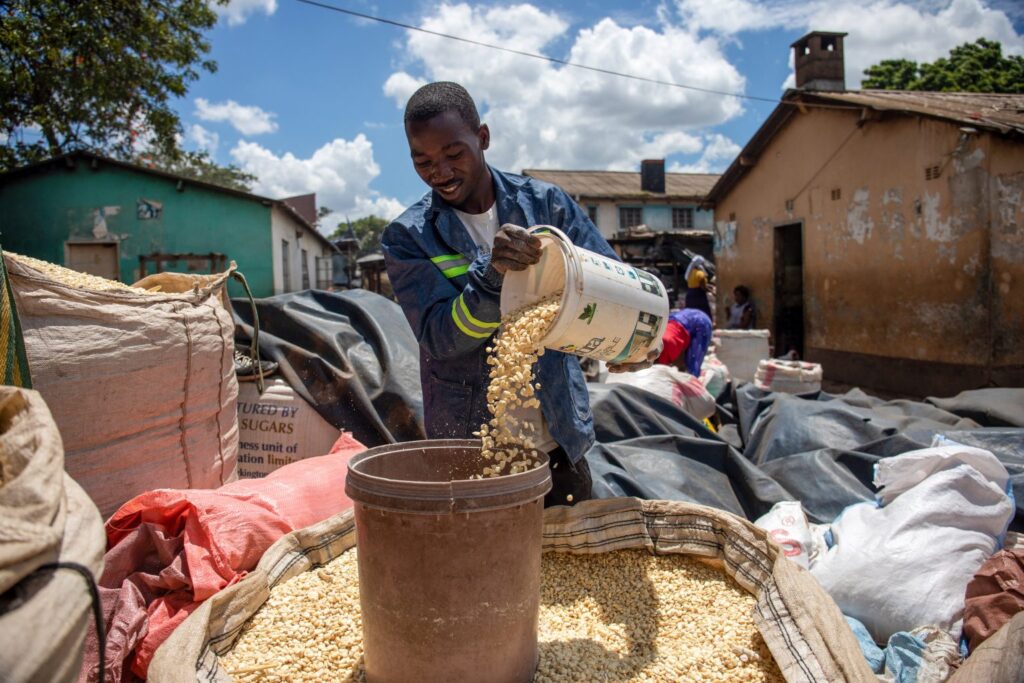Read in
Sophisticated, large-scale commercial farming can improve food security and global trade for African countries, but its success depends on investment and the rule of law.
In a nutshell
- African countries have opportunities for more exports to China and Europe
- Investments in infrastructure and energy are key for agricultural growth
- Risks to the sector include fragile security and governance institutions
While farmers across Europe are staging dramatic protests over the negative impacts green energy policies are having on their business, China is ramping up measures to support the modernization of agriculture in Africa. Already the second-largest market for agricultural exports from the continent, behind the European Union, China hopes to increase imports from Africa to $300 billion by 2025. The expansion of trade with China and a potential slowdown in European agricultural production due to green regulations provides a major growth opportunity for Africa in both markets.
The African Development Bank estimates that food and agriculture production in Africa could grow from $280 billion a year in 2023 to $1 trillion by 2030. Yet about 80 percent of the continent’s food is still produced by small-scale or subsistence farmers, and more than 200 million Africans go hungry every day. Even in South Africa, its most agriculturally advanced and industrialized country, there are growing concerns about food insecurity.
How, then, could Africa become a food basket for China and Europe while improving its own food security? One path lies in a shift toward large-scale commercial farming, and ultimately to mega-farms. A mega-farm is a technologically sophisticated, mass-scale commercial agriculture enterprise. In addition to the usual agricultural needs, mega-farming depends on the rule of law, secure land tenure, adequate infrastructure, affordable energy access and well-functioning banks and financial markets.
Stability and food security
Mega-farms can provide employment for both educated people and unskilled labor, and offer a pathway to development and economic growth in rural areas that lag fast-growing urban areas. To their critics, mega-farms raise concerns over animal welfare, ecological impacts and the use of antibiotics. But to their advocates, the model encourages stability and food security, especially in the areas where these are most needed.
The case of mega-farming in South Africa illustrates the point. According to assessments by the University of Wageningen over several years, the country’s poultry industry is internationally competitive in terms of production efficiency. Raising poultry consumes almost all the country’s maize and soybean production, and poultry is now the preferred animal protein for two-thirds of South Africans, particularly lower-income people.
Nearly 47,000 South African small-scale farmers have left poultry production due to the dumping of chicken by foreign producers (including in Brazil, the United States and Europe) as well as the collapse of electricity supply, infrastructure, municipal services and the effects of Covid-19 restrictions and avian influenza. Yet mega-poultry producers like Astral, RCL, Country Bird and Sovereign have remained competitive and helped the country avoid chicken shortages despite these problems.

The rule of law
In Malawi, meanwhile, the fourth-poorest country in the world relies on agriculture for most of its foreign exchange earnings, particularly tobacco production. According to the Famine Early Warning Systems Network, 22 percent of the country’s 20 million people are facing food shortages this year, despite the government making seed and fertilizer available at cheaper prices to small farmers.
As the country faces serious debt, with the government running out of money and inflation reaching 35 percent in January, attracting private agricultural investment through mega-farming has become a hopeful prospect. Malawi’s strategy aims to encourage mega-farming to boost economic growth and employment and to combat food shortages.
Zimbabwe, on the other hand, shows the costs of destroying privately owned commercial agriculture. Once the breadbasket of Africa and one of the largest tobacco producers in the world, Zimbabwe now has the unenviable distinction (shared with Guinea and Sudan) of spending 100 percent of its foreign currency receipts on food imports. A turning point was the land reform policies in the 2000s that effectively suspended the rule of law, enabling the government to confiscate large-scale commercial farms for little or no compensation. Coupled with endemic corruption – ranked 157th of 180 countries in 2022 – Zimbabwe is mired in poverty, with little hope for the future.
The African Continental Free Trade Area (AfCFTA), established in 2018, may be pivotal for agriculture and food security on the continent. Only a portion of its cross-border trade is currently between African countries; in 2018, intra-African trade accounted for 15 percent of exports, of which only 15 percent were agricultural products. The AfCFTA is expected to enhance the flow of agricultural products across African borders, providing that customs procedures at border crossings are improved to minimize the spoilage of produce in transit. More integrated value chains that process goods locally, rather than exporting commodity products, would increase revenue and create new jobs.
Europe and the U.S. are seeking to contain irregular immigration due to hunger and poverty from the world’s poorest continent, which also boasts the fastest-growing population. Toward that end, they can assist in the development of cheap energy in Africa, invest in infrastructure, support a stronger rule of law and encourage privately-owned, large-scale commercial farming.



